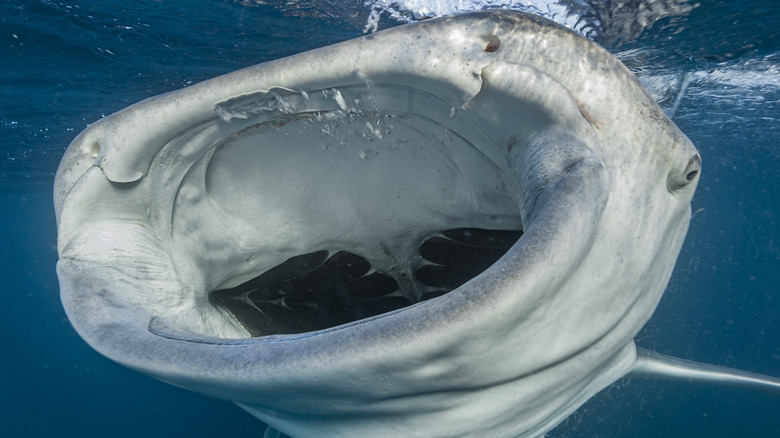Sharks are fascinating creatures that have been around for millions of years. One of the most distinctive features of sharks is their teeth. Sharks have a variety of teeth types, each suited for different purposes.
In this article, we will take a closer look at the four main types of shark teeth and their unique features. We will also explore how shark teeth help us chart the history of evolution.
You are reading: A Look At 4 Types Of Shark Teeth And Their Unique Features

A Look At 4 Types Of Shark Teeth And Their Unique Features
Needle-like teeth

Needle-like teeth are a type of shark tooth that is excellent for catching fish or other small sea creatures and is very effective at grasping slippery animals like squid.
These teeth are often found in species such as bull sharks and blue sharks, which are hunters and feed on various prey, including fish, squid, flounder, and even other smaller sharks.
Some needle-like teeth are straight, while others are curved and can be used to hook prey. Sharks with needle-like teeth commonly feed on small to medium-sized fish, and these teeth are especially effective for such prey because they can easily grip their slippery and narrow bodies.
Dense flattened teeth
Some shark species have dense flattened teeth that are used mainly for crushing food, such as crustaceans and bivalves. These teeth are specialized for grinding and crushing hard-shelled prey.
Read more : Discover The Top 5 Most Expensive Types Of Tuna In 2023
Sharks with dense flattened teeth are often found at the bottom of the ocean floor, where they can easily crack open shells. Examples of sharks with dense flattened teeth include angel sharks and nurse sharks.
These teeth are typically found in the lower jaw, while the upper rows of teeth are often triangular in shape and used for killing and eating prey.
Non-functional teeth

Non-functional teeth are teeth that serve no purpose in the feeding process of certain shark species. These teeth are typically small, numerous, and do not contribute to the shark’s ability to catch or consume prey.
Non-functional teeth are found in filter-feeding sharks, such as the whale shark, basking shark, and megamouth shark, which primarily feed on plankton and other small organisms.
These sharks have evolved to have a specialized feeding mechanism that does not require the use of teeth. Instead, they open their mouths wide, swim towards their prey, and filter out the water, allowing the small organisms to be swallowed.
Pointed lower – triangular upper teeth
The great white shark is one of the most famous types of sharks with pointed lower teeth and triangular upper teeth. This tooth configuration is particularly useful for cutting larger prey, such as mammals and larger fish.
The serrated edges of these teeth make them effective cutting tools, allowing the shark to cut its prey into smaller pieces that are easier to swallow. The combination of pointed lower teeth and triangular upper teeth is also found in other shark species, depending on their diet and feeding habits.
FAQS
1. How many types of shark teeth are there?
Read more : 10 Types Of Saltwater Fish And What Make The Best Pets
There are four main types of shark teeth: needle-like teeth, dense flattened teeth, non-functional teeth, and pointed lower – triangular upper teeth.
2. What are needle-like teeth used for?
Needle-like teeth are used for catching small to medium-sized fish and other slippery prey.
3. What are dense flattened teeth used for?
Dense flattened teeth are used for crushing and grinding hard-shelled prey, such as crustaceans and mollusks.
4. What are non-functional teeth?
Non-functional teeth are teeth that serve no purpose in the feeding process of certain shark species. These teeth are typically small, numerous, and do not contribute to the shark’s ability to catch or consume prey.
5. What are pointed lower – triangular upper teeth?
Pointed lower – triangular upper teeth are a tooth combination found in some shark species, including the great white. These teeth are used for cutting larger prey, such as mammals and larger fish.
6. How many teeth do sharks have?
Sharks can have up to 15 rows of teeth in their jaws, with each row containing up to hundreds of teeth. Sharks continuously shed and replace their teeth throughout their lifetimes, with some studies suggesting they lose at least one tooth each week.
7. How can shark teeth help us chart the history of evolution?
Shark teeth can provide valuable information about the evolution of sharks and their diet over time. Paleontologists can study fossilized shark teeth to learn about the feeding habits of ancient sharks and how they interacted with their environment.
8. How can I identify different types of shark teeth?
Different types of shark teeth have unique shapes and sizes. Needle-like teeth are long, sharp, and pointed, while dense flattened teeth are broad and flat. Non-functional teeth are small and numerous, while pointed lower – triangular upper teeth have a serrated edge. You can also identify shark teeth by their glossy quality and the shape of the tooth.
Source: https://petstutorial.com
Category: Animals










